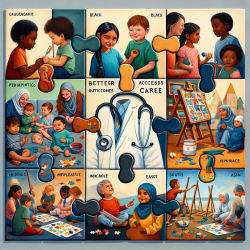Introduction
In the realm of pediatric healthcare, addressing the complex needs of children in marginalized communities is a pressing concern. The recent study titled "Facilitating Access to Care for Children With Complex Health Needs Through Low-Barrier Place-Based Intake Processes: Lessons From the RICHER Social Pediatric Model" provides critical insights into how practitioners can enhance care delivery for these vulnerable populations.
The RICHER Model: A Game Changer
The RICHER (Responsive, Intersectoral, Child and Community Health, Education and Research) model stands out as a beacon of hope for children facing adverse social determinants of health (SDoH). This model was specifically designed to improve access to care in disenfranchised urban neighborhoods, where traditional healthcare models often fall short.
According to the study, the RICHER model successfully reached a medically, developmentally, and socially complex population. It highlights the importance of a low-barrier, place-based approach that integrates healthcare services within community settings like schools, daycares, and community centers.
Key Findings and Implications for Practitioners
The study's retrospective chart review revealed that 50% of the children had neurodevelopmental disorders, with a significant portion also facing mental health challenges. This is notably higher than the estimated 17% prevalence in the general pediatric population. Such data underscores the critical need for targeted interventions in these communities.
Practitioners can draw several lessons from this research:
- Collaborate with Community Partners: By working closely with trusted community organizations, practitioners can identify and reach children who might otherwise be overlooked.
- Implement Low-Barrier Access: Creating accessible care pathways, such as self-referrals and outreach services, can significantly improve healthcare access for structurally marginalized families.
- Focus on Comprehensive Care: The integration of primary and subspecialty care ensures that children receive holistic and coordinated healthcare, addressing both medical and social needs.
Encouraging Further Research
While the RICHER model provides a robust framework, further research is essential to refine and expand its application. Practitioners are encouraged to explore how similar models can be adapted to different community contexts, particularly in rural or geographically isolated areas.
Additionally, ongoing evaluation of long-term health outcomes for children who access low-barrier care is crucial. Such data will help in understanding the full impact of these interventions and guide future policy and practice.
Conclusion
The RICHER model offers a promising approach to addressing the complex health needs of children in underserved communities. By implementing the lessons from this study, practitioners can play a pivotal role in transforming pediatric healthcare delivery, ensuring that no child is left behind.
To read the original research paper, please follow this link: Facilitating Access to Care for Children With Complex Health Needs Through Low-Barrier Place-Based Intake Processes: Lessons From the RICHER Social Pediatric Model.










